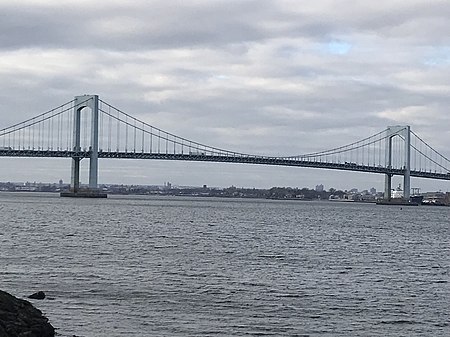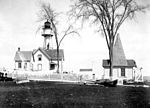Throgs Neck Bridge

The Throgs Neck Bridge is a suspension bridge in New York City, carrying six lanes of Interstate 295 (I-295) over the East River where it meets the Long Island Sound. The bridge connects the Throggs Neck section of the Bronx with the Bay Terrace section of Queens. Opened on January 11, 1961, it is the newest bridge across the East River and was built to relieve traffic on the Bronx–Whitestone Bridge, 2 miles (3.2 km) to the west. The Throgs Neck Bridge is also the easternmost crossing of the East River. Due to this and its proximity to I-95, it is the closest route from Long Island to New Jersey via the George Washington Bridge, as well as points north. The Throgs Neck Bridge is owned by the government of New York City and operated by the Triborough Bridge and Tunnel Authority (TBTA), an affiliate agency of the Metropolitan Transportation Authority (MTA).
Excerpt from the Wikipedia article Throgs Neck Bridge (License: CC BY-SA 3.0, Authors, Images).Throgs Neck Bridge
Throgs Neck Bridge, New York The Bronx
Geographical coordinates (GPS) Address External links Nearby Places Show on map
Geographical coordinates (GPS)
| Latitude | Longitude |
|---|---|
| N 40.802 ° | E -73.793 ° |
Address
Throgs Neck Bridge
Throgs Neck Bridge
10465 New York, The Bronx
New York, United States
Open on Google Maps




